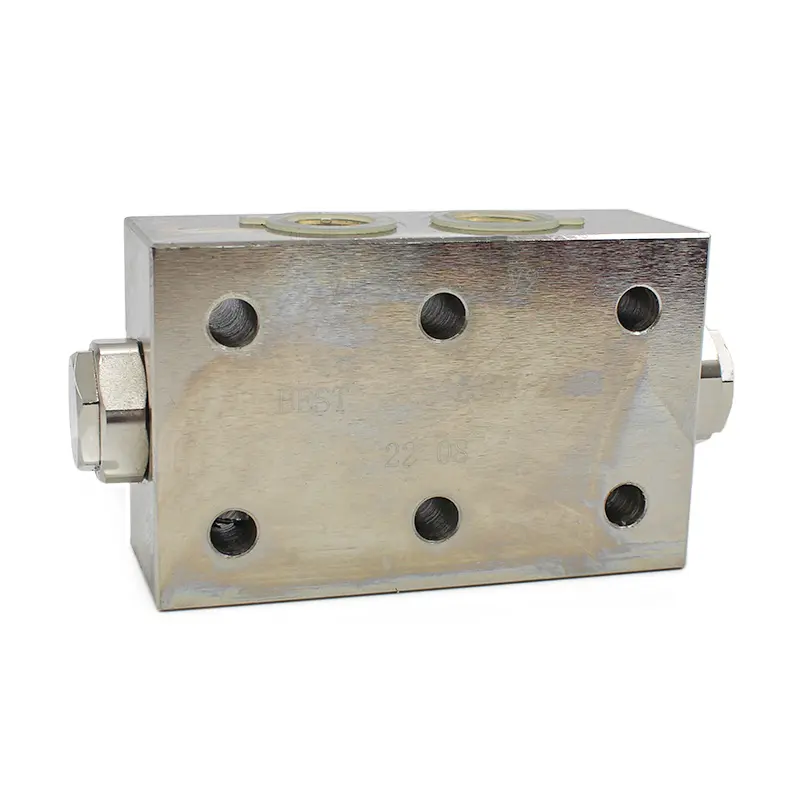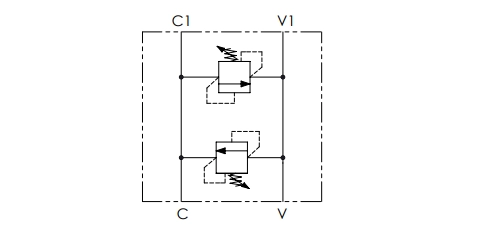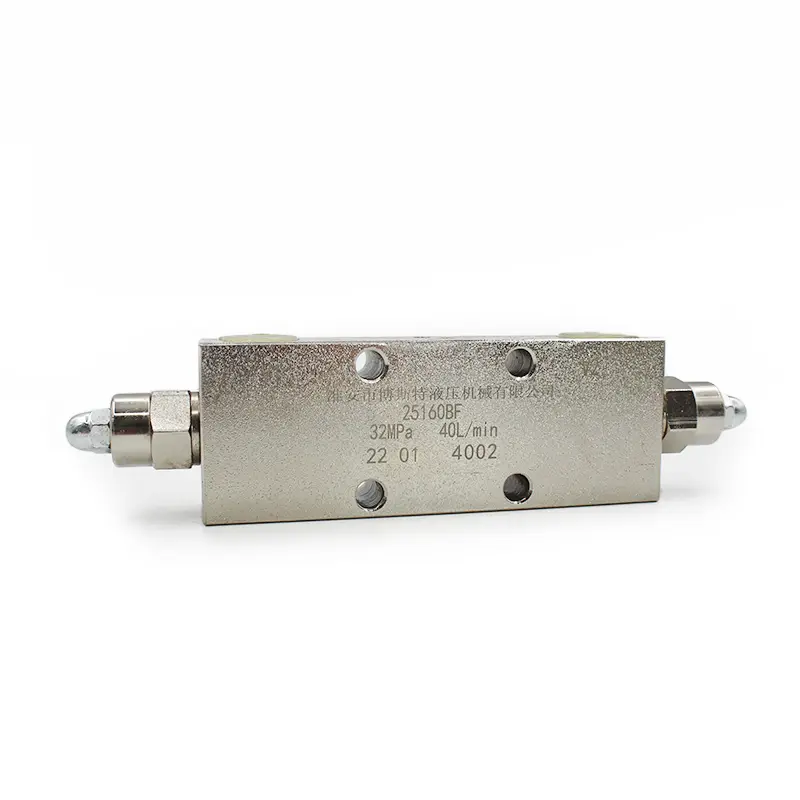
Unlock Efficient Operations: A Guide to Understanding Different Types of Pressure Control Valves
2024-12-26Think of your hydraulic machinery as a team of hardworking players. Pressure control valves are the coaches, making sure everything runs smoothly and safely. This article will break down the different types of pressure control valves, explaining how they work and why they are essential for anyone involved in machinery manufacturing, industrial equipment production, or hydraulic system integration. Whether you're looking to improve your system's performance or ensure its longevity, understanding these valves is key. So, let's dive in and explore the world of hydraulic pressure control!
What is a Pressure Control Valve and Why Is It Important for Your Hydraulic System?
Imagine trying to control the flow of water in your garden with just your thumb over the hose. Sometimes you get too much pressure, sometimes not enough. A pressure control valve acts like a sophisticated nozzle, giving you precise control over the pressure within your hydraulic system. These valves are essential because they protect your valuable equipment from excessive pressure and ensure smooth, efficient operation. Without them, you risk damage, leaks, and even system failure. They operate by sensing the pressure and adjusting accordingly, like tiny, tireless guardians.
What Are the Main Types of Pressure Control Valves and What Do They Do?
Just like there are different players on a team, there are different types of pressure control valves, each with a specific role. These valves include relief valves, sequence valves, reducing valves, counterbalance valves, and unloading valves. Each type is designed to manage pressure in a unique way, ensuring your hydraulic system operates at peak performance and safety. Understanding these differences is crucial for selecting the right valve for your specific application.

How Do Relief Valves Offer Essential Hydraulic System Protection?
Think of a relief valve as a safety valve for your hydraulic system. Its primary job is to limit the maximum pressure to prevent damage. When the pressure exceeds a preset pressure, the relief valve opens, allowing fluid to flow back to the tank. This prevents excess pressure from building up and potentially damaging components. Different types exist, including direct-acting relief valves and pilot-operated relief valve, each suited for different pressure ranges and flow requirements. The pressure at which a relief valve first opens to allow flow is critical for system safety.

Sequence Valves: When is it Necessary to Use This Type of Valve?
Imagine a process that needs to happen in a specific order. That's where a sequence valve comes in. These valves are used to control the order in which different parts of a hydraulic system activate. The sequence valve allows pressure to build in one part of the circuit until it reaches a certain pressure, then it "opens the door" for pressure to flow to the next part. They are used when the pressure needs to reach a certain pressure level before another function can begin, ensuring a smooth and controlled sequence of operations. They are often referred to as sequence valves.
How Do Reducing Valves Maintain Consistent Downstream Pressure?
Have you ever needed a lower water pressure for a delicate task? A reducing valve does the same for your hydraulic system. These pressure control valve types are designed to maintain a set pressure in a specific part of the circuit, regardless of fluctuations in the main system pressure. The pressure available in the secondary circuit remains constant because the pressure-reducing valves adjust the flow to keep the downstream pressure stable. They are crucial when you need a consistent lower pressure for certain actuators or components. The pressure from the inlet is carefully managed to provide the desired outlet pressure.
What Role Does a Counterbalance Valve Play in Ensuring Stability and Control?
Imagine trying to hold a heavy object steady on a slope. A counterbalance valve provides similar support in a hydraulic system. These valves are used to prevent a load from falling or drifting due to gravity. They create resistance to the flow of oil, ensuring controlled movement, especially in vertical applications. When the load pressure is felt, the counterbalance valve allows controlled descent. You might encounter single in line counterbalance valve or more complex configurations depending on your needs. For example, a single flanged counterbalance valve offers a specific mounting option.
How Do Unloading Valves Improve Hydraulic System Efficiency?
Think of an unloading valve as a way to give your hydraulic pump a break. In systems with accumulators or multiple pumps, the unloading valve allows one pump to operate at low pressure or bypass the system once a certain pressure level is reached. This reduces wear and tear on the pump and saves energy. When the pressure reaches the desired level, the unloading valve diverts the pump's output, preventing it from working against a closed system and improving overall efficiency.
What Key Standards Should You Look for When Selecting Pressure Control Valves?
Just like any critical component, standards for pressure control valves are essential for ensuring quality, safety, and compatibility. Look for certifications like ISO standards, which indicate that the control valve has been tested and meets international quality benchmarks. These standards for pressure control valves ensure that the valves are used safely and effectively within your hydraulic system. Checking for these certifications is a key part of quality inspection.
Valves and How it Works: How Do Pressure Control Valves Function within a Hydraulic System?
Understanding valves and how it works within a hydraulic system is crucial. Pressure control valves play a vital role in managing the force that drives the system. They operate by sensing the pressure at a specific point. For instance, a relief valve will open when the pressure exceeds its set pressure. A reducing valve will adjust its internal orifice to regulate pressure downstream. The specific mechanics vary depending on the type of valve, but they all work to maintain the desired pressure level within a system.
Choosing the Right Pressure Control Valve: What Factors Should You Consider?
Selecting the correct pressure control valve is crucial for optimal performance. Consider factors like the maximum pressure of your system, the required flow rate, and the specific function you need the valve to perform (e.g., relieving excess pressure, reducing pressure, sequencing operations). Understanding your system pressure requirements and the specific needs of your application will guide you to the most suitable pressure control valve. For example, if you need to protect against sudden spikes, a direct-acting relief valve might be appropriate. If you need to maintain a constant pressure level in a secondary circuit, a pressure reducing valve is the better choice.
In Summary, Remember These Key Points:
- Pressure control valves are essential for protecting hydraulic systems from excessive pressure and ensuring efficient operation.
- Relief valves act as safety devices, opening to release excess pressure.
- Sequence valves control the order of operations in a hydraulic system.
- Reducing valves maintain a consistent lower pressure in a specific part of the circuit.
- Counterbalance valves prevent loads from falling or drifting due to gravity.
- Unloading valves improve efficiency by allowing pumps to operate at lower pressure when needed.
- Always check for relevant standards for pressure control valves like ISO certifications.
- Understanding valves and how it works within the system is crucial for proper selection and maintenance.
- Consider your system's specific pressure and flow requirements when choosing a valve.
Understanding the nuances of different types of pressure control valves empowers you to build more reliable, efficient, and safer hydraulic systems. As Allen from China, with our factory boasting 7 production lines, we've seen firsthand the impact of quality hydraulic valves on the performance of machinery across the USA, North America, Europe, and Australia. For instance, our reliable hydraulic directional control valves are a cornerstone of many of our customers' systems. We strive to provide high-quality materials and precision-engineered valves that meet the demands of various industries. Remember Mark Thompson, our typical customer in the USA? He values both quality and competitive pricing, which is exactly what we aim to deliver. We understand the pain points of our B2B clients, from the need for clear communication to ensuring timely logistics. That’s why we focus on building strong relationships and delivering on our promises. Explore our range of modular valves and see how they can optimize your hydraulic circuits. Don't hesitate to investigate our pilot operated check valves for enhanced safety in your applications. And for precise pressure management, our selection of pressure control valves is designed to meet your most demanding requirements.





